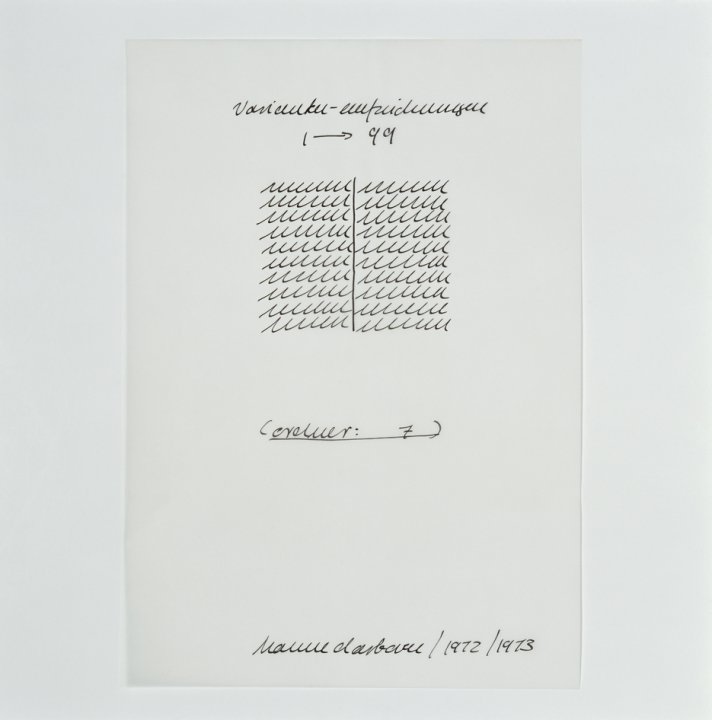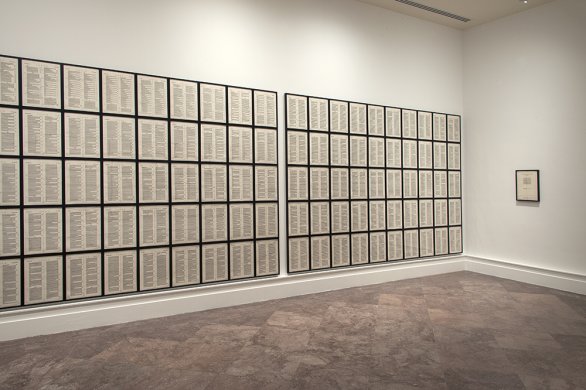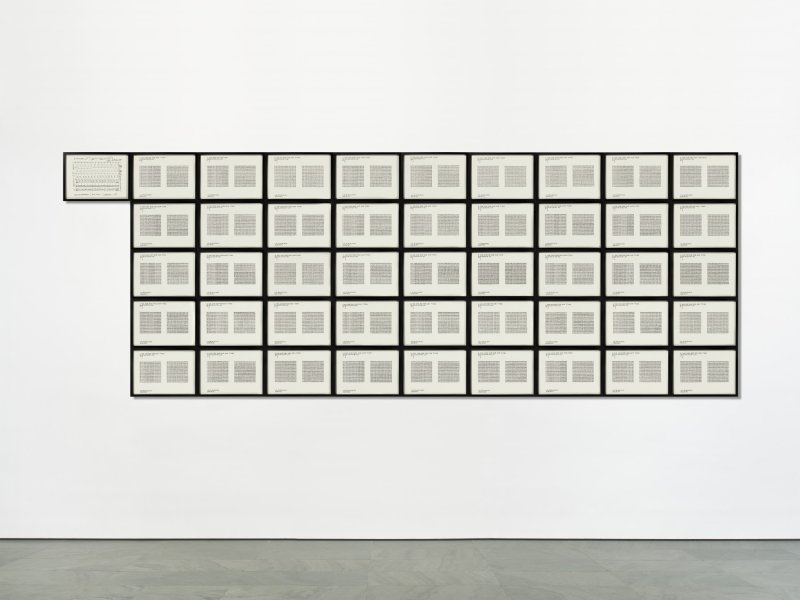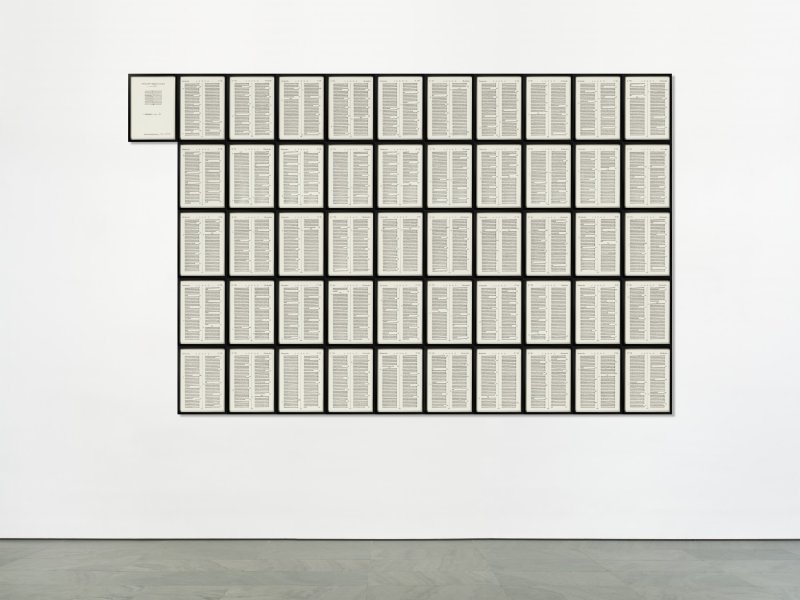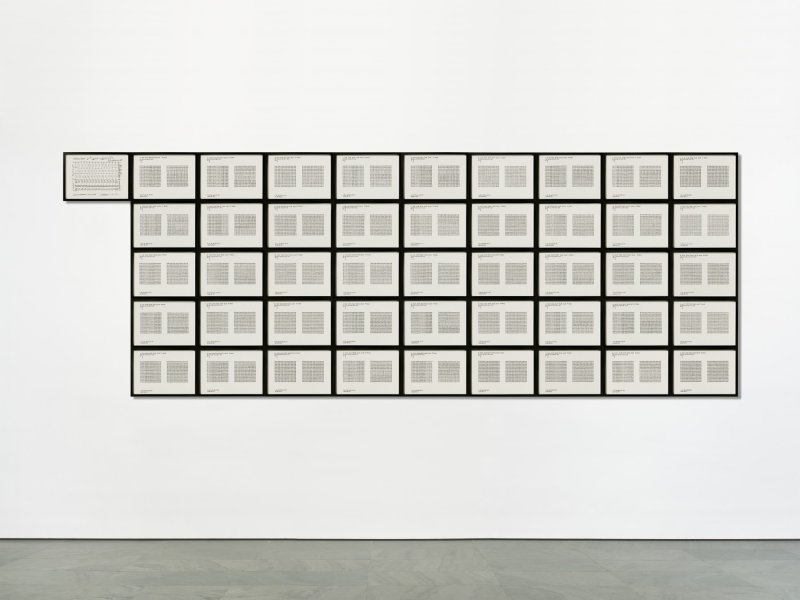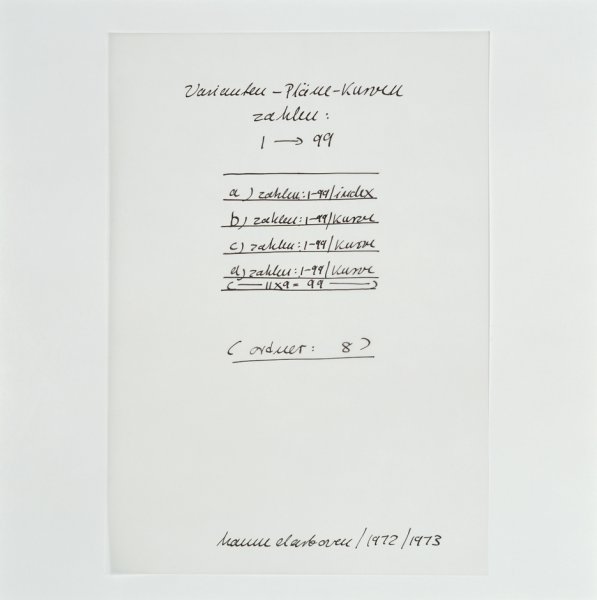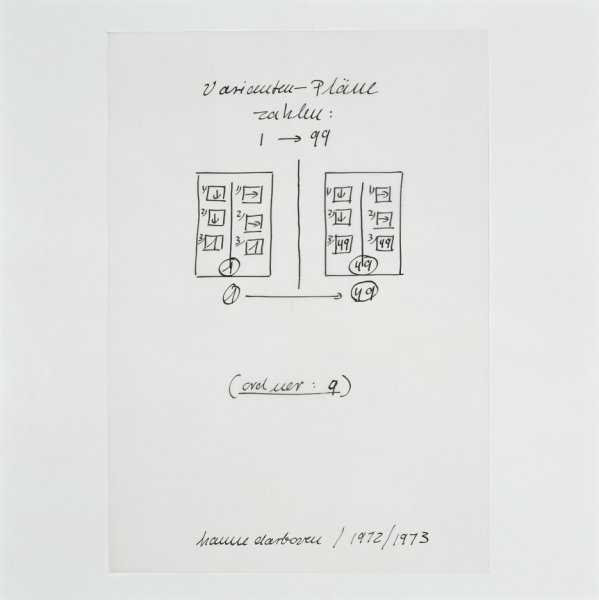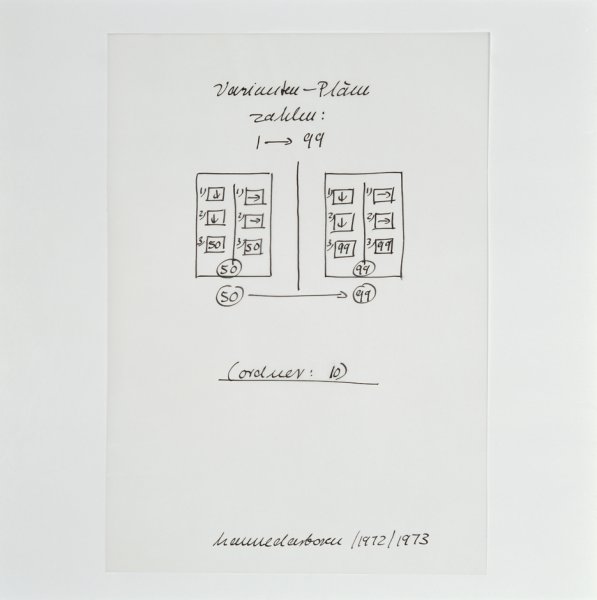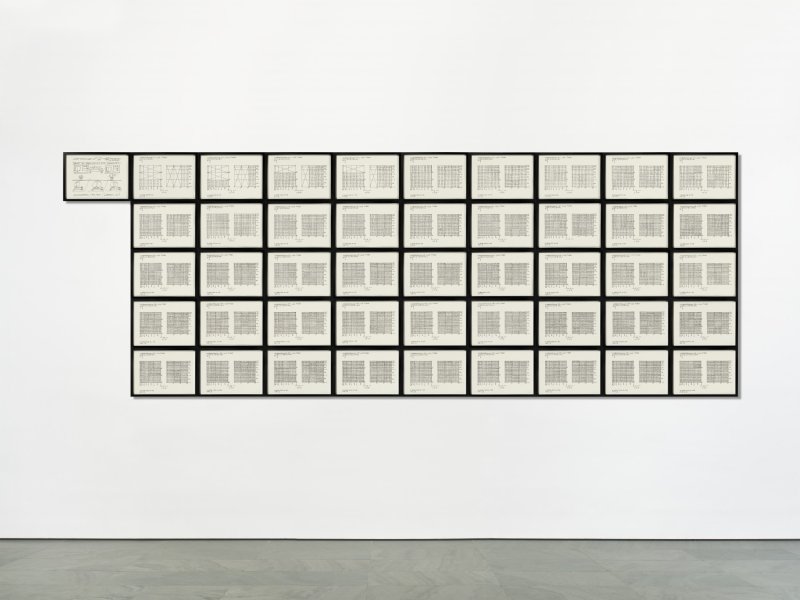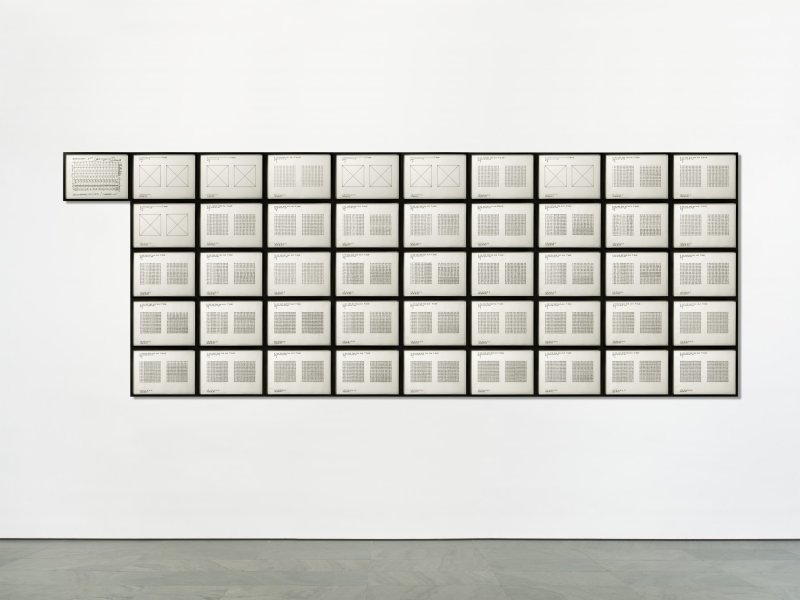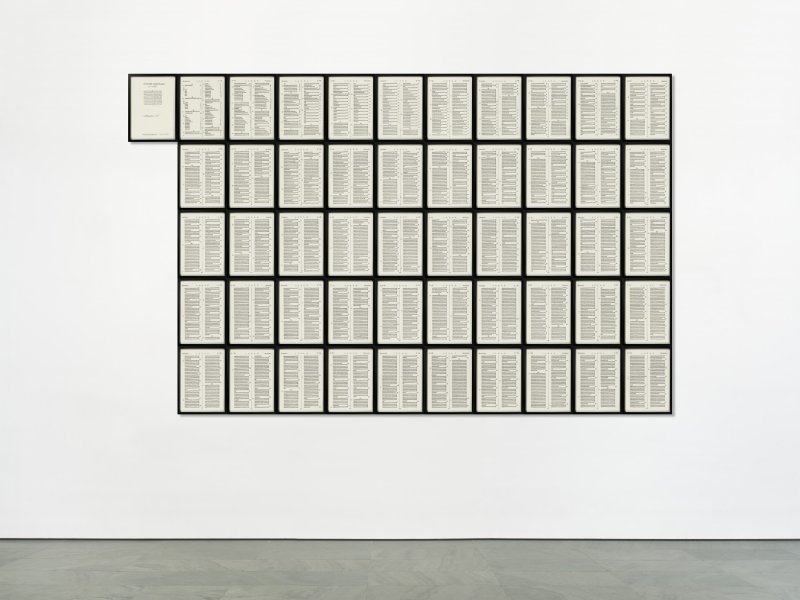Hanne Darboven
German, 1941-2009
Varianten-aufzeichnungen 1-99 (Ordner:7), 1972-1973
Artwork Details
Materials
forty-six ink on vellum drawings
Measurements
each (sheet): 16 1/2 x 11 3/4 inches (30 x 42 cm)
Collection Buffalo AKG Art Museum
Credit
The Panza Collection and by exchange: George B. and Jenny R. Mathews Fund, Bequest of Arthur B. Michael, Albert H. Tracy Fund and Bequest of John Mortimer Schiff, 2015
Accession ID
2015:14.9a-tt
Often using the current calendar date as her starting point, Hanne Darboven produced systematic charts and sequences of numbers as well as long strands of looped forms that evoke handwriting. Both serve as methods of counting and marking time as well as giving material form to its passage. While the artist’s drawings often explore the many possible relationships that can exist between integers, her use of numbers in no way represents an interest in mathematical logic, as Darboven herself warned, “I only use numbers because it is a way of writing without describing. . . . I choose numbers because they are so constant, confined, and artificial.”
Darboven’s notion that numbers are “constant, confined, and artificial” reflects aspects of her educational background. While Darboven first trained as a pianist, in the 1960s she studied graphic design in Hamburg, Germany. In 1966, Darboven moved to New York, where she met and exhibited with many artists of the burgeoning Minimalist and Conceptual art movements, including Carl Andre and Sol LeWitt (who was an early supporter of her work and remained a lifelong friend). Although she lived in New York for only two years, it was a formative experience and established writing and numbers as the building blocks for her work in the 1970s.
Label from Looking at Tomorrow: Light and Language from The Panza Collection, 1967–1990, October 24, 2015–February 7, 2016
